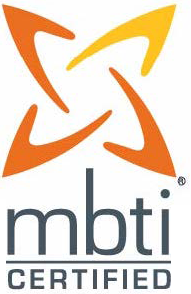MBTI Psychometric Assessment
The Myers Briggs Type Indicator® increases self-awareness, and fosters the understanding of different personalities and how to work with them.
The MBTI® instrument has helped millions of people in every part of the world reach a deeper understanding of who they are and how they may effectively communicate with others. It’s a tool that provides a clear perspective of the individual’s personality type, which encourages personal improvement, enhances working relationships, and channels productivity individually and in the
work place.
The Myers Briggs® assessment is simple and effective. It is designed to capture the many components of the personality and reveals the multiple dimensions of the individual. The MBTI®assessment offers a variety of reports, each designed to address different objectives. During our initial complimentary consultation, we determine the report document that focuses on the information sought.

Resources
How It Works
Creating Awareness for a Better World
The benefits of the Myers Briggs Type Indicator® assessment:
- Improve communication and relationships by understanding different personality types
- Gain self-awareness to improve self–confidence, decision making, stress management, and interpersonal skills.
- Enhance relationships and communication in organizations so employees and teams work better together, resulting in increased productivity and performance
MBTI Personality Preferences
The MBTI assessment entails a series of questions that ultimately help identify your natural preferences in four areas of personality:
The Four Myers-Briggs Preference Pairs
Extraversion
- Direct their energy and attention outward
- Are energized by interacting with people and taking action
Opposite ways to direct and receive energy.
Introversion
- Direct their energy and attention inward
- Are energized by reflecting on their own and others’ ideas, memories, and experiences
Sensing
- Focus on what is real and actual
- Observe and remember specifics
- Are factual, concrete, and sequential
Opposite ways to take in information.
Intuition
- Focus on patterns and meanings
- Remember specifics when they relate to a pattern
- Are abstract and imaginative
Thinking
- Steps back to get an objective view
- Analyzes
- Uses cause-and-effect reasoning
- Solves problems with logic
Opposite ways to decide and come to conclusions.
Feeling
- Steps in to identify with those involved
- Empathizes
- Are guided by personal and social values
- Assesses impacts of decisions on people
Judging
- Organized
- Systematic
- Methodical
- Make short and long-term plans, and then follow them
- Solves problems with logic
Opposite ways to approach the outside world.
Perceiving
- Adaptable and curious
- Casual
- Open-ended
- Adjust flexibly to new information and changes
